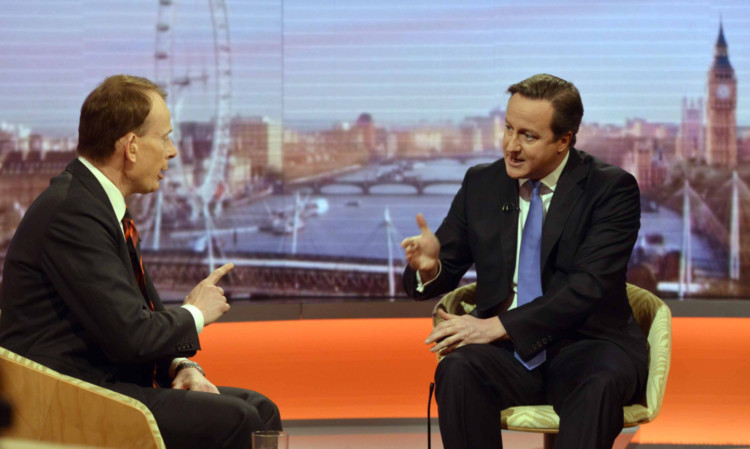David Cameron said it was “fair” to protect the basic state pension from cuts, but declined to rule out a squeeze on other pensioner benefits after the general election.
The Prime Minister has pledged to retain the “triple lock” guarantee of minimum annual pension rises of 2.5% until at at least 2020 if the Tories win the next election.
He said that it was right to prioritise “dignity and security” for people in their old age while austerity continued to bite into welfare and other spending.
But he failed to carry over a pledge made for the duration of this parliament to continue winter fuel payments, free prescriptions, bus passes and TV licences for all pensioners.
“I made a very clear promise. We’ve kept that promise,” he said, amid mounting political pressure from all sides to remove such perks from better-off OAPs.
“We will set out our plans at the next election in our manifesto.”
Labour has said it would strip winter fuel payments from the richest 5% of pensioners and the Liberal Democrats have also said they would means-test the benefits.
Under the “triple lock” the basic state pension rises in line with inflation, wages or 2.5% whichever is the highest.
Mr Cameron said the protection had been made possible by “difficult decisions” such as extending the retirement age, meaning millions in their 30s and 40s will wait longer to get a pension.
“Politics is about choices and the choice I make is: yes, we should be giving pensioners dignity and security in their old age,” he told BBC1’s Andrew Marr Show.
“It is fair because you should be protecting pensioners,” he added, insisting the Government was also taking action to improve conditions for young workers.
His move will put pressure on the other parties to offer a similar guarantee.
Liberal Democrat pensions minister Steve Webb said in June that, while he backed the continuation of the triple lock, parties would need to examine whether it remained affordable post-2015.
Mr Cameron has already indicated that the state pension would be the only spending exempt from a new cap on overall welfare spending.
Labour has indicated that it could be included in the cap in the long-term but that it remained committed to the principle of the triple lock at present.
Mr Cameron also declined to rule out a politically controversial cut in top rate of income tax from 45p to 40p – but insisted his priority was reducing the burden on the lowest earners.
The Prime Minister faces calls from right-wing MPs to bring it down further – despite the controversial move from 50p already exposing the party to Labour claims of offering tax cuts to millionaires.
The 45p rate was set to “bring in better percentage” than the higher levy, he said.
“I actually want the rich to pay more so you ought to set tax rates that encourage people to earn, to set up businesses, to make money and then to pay taxes.
“We will set taxes to raise revenue … not to make a political point. But if I had some money in the coffers I would target that money at the lowest paid, at those who work hard, who want to get on.
“Those are the ones that need our help,” he said, pointing to the raising of the threshold at which people start to pay income tax to £10,000 and freezes in council tax and fuel duty.
He told the Sunday Times: “If people can bring forward arguments about how to maximise the revenue from the top rate of tax, I’m always interested to read them.”
Mr Cameron said the job of the Government was “not even halfway done” as he played down opinion polls giving Labour a consistent lead.
The latest large-scale survey by former Conservative Party deputy chairman Lord Ashcroft also painted a gloomy picture of the chances of securing an overall Tory majority in 2015.
It found that more than one in three people who voted Tory in the 2010 general election are not presently planning to do so next time – with half switching allegiance to the UK Independence Party, a fifth aligning themselves with Labour or the Liberal Democrats and a third undecided.
But in a more hopeful sign, a clear majority of those “defectors” (56%) think David Cameron is the best of the three main party leaders and say their preferred outcome in 2015 would be a Conservative majority – with Labour struggling to convince voters as an alternative.
“We have a long-term economic plan that we are working to. The plan is working: we have over a million more people in work, we’ve got 400,000 new businesses operating in Britain, we are one of the fastest-growing countries now in the western world,” Mr Cameron told the Marr Show.
“But we can’t be complacent. The job isn’t even halfway done.
“This year, for me, is a year about governing, it’s about delivering. I’m content that the public will judge me and the Government I run and the party I run in 2015.
“But the public need to know that the Opposition are committed to undoing all that good work. It would be like handing back the keys to the people who crashed the car in the first place.”
